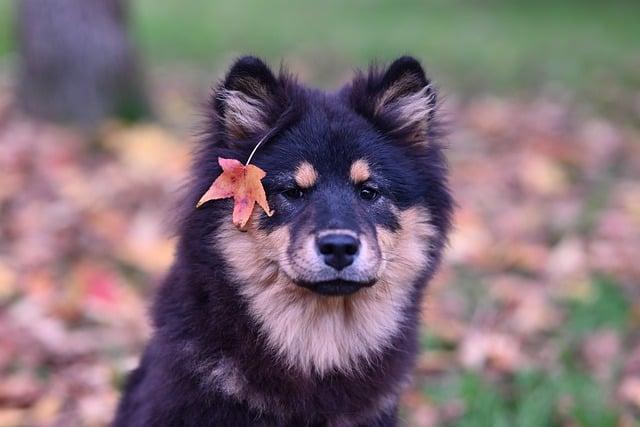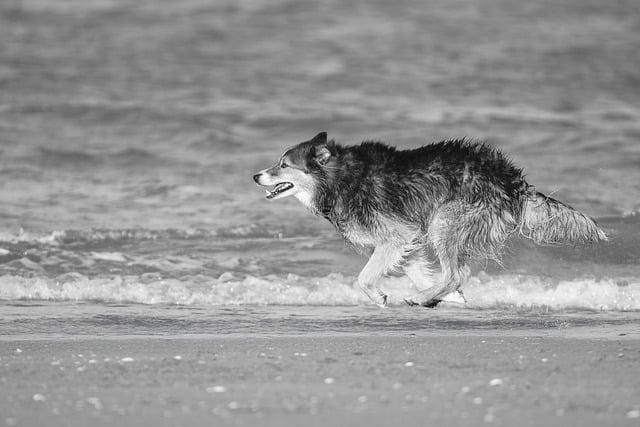Imagine walking through a park, and suddenly, a gentle giant bounds toward you—a massive dog with a heart to match its size. This is an XL dog, a breed that embodies loyalty, strength, and companionship. XL dogs, often weighing over 100 pounds, are not just pets; they are family members who thrive on love and attention. Their size may seem intimidating, but their temperament is usually gentle and affectionate. If you’re ready for a big-hearted friend who will fill your life with joy, an XL dog might just be your perfect match.
Contents
- Understanding the Characteristics of XL Dogs
- The Benefits of Owning an XL Dog
- Essential Care Tips for XL Dog Owners
- Choosing the Right XL Dog Breed for Your Lifestyle
- Q&A
Understanding the Characteristics of XL Dogs
When we think of XL dogs, we often envision gentle giants that embody a unique blend of strength and grace. These breeds, typically weighing over 100 pounds, are not just larger than life; they also possess distinct characteristics that set them apart from their smaller counterparts. Understanding these traits is essential for anyone considering welcoming an XL dog into their home.
One of the most notable characteristics of XL dogs is their **gentle temperament**. Despite their imposing size, many XL breeds are known for their calm and friendly nature. They often form strong bonds with their families and can be incredibly affectionate. This makes them excellent companions, especially for families with children. Their protective instincts also ensure that they are vigilant guardians, providing both security and companionship.
Another defining feature of XL dogs is their **exercise needs**. While they may enjoy lounging around the house, these dogs require regular physical activity to maintain their health and happiness. Daily walks, playtime, and mental stimulation are crucial for preventing boredom and destructive behavior. Owners should be prepared to invest time in their XL dog’s exercise routine, as these breeds thrive on interaction and engagement.
Lastly, XL dogs often come with **specific health considerations** that potential owners should be aware of. Due to their size, they can be prone to certain health issues, such as joint problems and heart conditions. Regular veterinary check-ups and a balanced diet are essential to ensure their well-being. Understanding these health aspects will help owners provide the best care possible, allowing their XL companions to lead long, fulfilling lives.
The Benefits of Owning an XL Dog
Owning an XL dog can be a transformative experience that brings numerous advantages to your life. These gentle giants often exude a calm and friendly demeanor, making them excellent companions for families and individuals alike. Their size alone can provide a sense of security, as many XL breeds are naturally protective of their loved ones. This innate guarding instinct can be particularly reassuring for those living in urban environments or areas with higher crime rates.
Another significant benefit of having a larger dog is their ability to engage in various activities. XL dogs are often highly trainable and eager to participate in outdoor adventures, whether it’s hiking, running, or playing fetch. Their strength and stamina allow them to keep up with active lifestyles, making them perfect partners for those who enjoy spending time outdoors. Additionally, their playful nature can encourage owners to maintain a more active lifestyle, promoting better health for both the dog and the owner.
XL dogs are also known for their loyalty and companionship. Their affectionate nature often leads to deep bonds with their families, providing emotional support and comfort. Many XL breeds are known to be great with children, fostering a nurturing environment that can teach kids responsibility and empathy. This bond can be incredibly rewarding, as these dogs often become integral members of the family, participating in daily activities and creating lasting memories.
Lastly, owning an XL dog can foster a sense of community. Their impressive size often attracts attention, sparking conversations with fellow dog lovers and neighbors. This can lead to new friendships and connections, enriching your social life. Moreover, XL dogs often participate in community events, such as dog shows or charity walks, allowing owners to engage with others who share similar interests. Embracing the joys of owning a larger breed can truly enhance your life in ways you may not have anticipated.
Essential Care Tips for XL Dog Owners
Owning an XL dog comes with its own set of responsibilities and rewards. These gentle giants require a unique approach to care that ensures their health and happiness. One of the most crucial aspects is **nutrition**. XL dogs have specific dietary needs that differ from smaller breeds. Opt for high-quality dog food formulated for large breeds, which helps maintain their weight and supports joint health. Always consult your veterinarian to determine the best feeding schedule and portion sizes tailored to your dog’s age, weight, and activity level.
Regular **exercise** is vital for XL dogs to keep them physically fit and mentally stimulated. Unlike smaller breeds, these larger dogs need more space to roam and play. Aim for at least 60 minutes of exercise each day, which can include walks, runs, or playtime in a secure yard. Engaging in activities like fetch or agility training can also provide both physical and mental challenges, helping to prevent boredom and destructive behaviors.
**Grooming** is another essential aspect of XL dog care. Depending on the breed, these dogs may have varying grooming needs. Regular brushing helps to reduce shedding and keeps their coat healthy. Additionally, pay attention to their ears, teeth, and nails. Regular dental care is crucial, as larger breeds are prone to dental issues. Schedule routine vet visits for professional grooming and health check-ups to catch any potential problems early.
Lastly, **socialization** plays a significant role in the development of XL dogs. Early exposure to different environments, people, and other animals can help them grow into well-adjusted companions. Enroll your dog in obedience classes or dog parks where they can interact with others. This not only enhances their behavior but also strengthens the bond between you and your furry friend, ensuring a happy and fulfilling life together.
Choosing the Right XL Dog Breed for Your Lifestyle
When considering an XL dog breed, it’s essential to align your choice with your lifestyle and living situation. These majestic canines require ample space, both indoors and outdoors, to thrive. If you live in a small apartment or a home without a yard, an XL breed may not be the best fit. Instead, think about your environment and whether it can accommodate the physical needs of a larger dog. A spacious home with a secure yard is ideal, allowing your dog to roam and play freely.
Another critical factor is your activity level. XL breeds often have high energy levels and require regular exercise to maintain their health and happiness. If you enjoy outdoor activities such as hiking, running, or long walks, an XL dog can be a perfect companion. However, if your lifestyle is more sedentary, you might want to consider a breed that has lower exercise requirements. Some breeds thrive on companionship and mental stimulation rather than vigorous physical activity, so it’s vital to research which breed aligns with your daily routine.
Socialization and training are also paramount when choosing an XL dog. These breeds can be strong-willed and may require consistent training and socialization from an early age. If you have children or other pets, consider how well the breed interacts with them. Some XL breeds are known for their gentle nature, while others may be more dominant. Understanding the temperament of the breed you are considering will help ensure a harmonious household.
Lastly, consider the long-term commitment that comes with owning an XL dog. These breeds often have a lifespan of 8 to 12 years, and during that time, they will require regular veterinary care, quality nutrition, and plenty of love and attention. Be prepared for the financial responsibilities that come with larger breeds, including food, grooming, and medical expenses. By carefully evaluating your lifestyle and the needs of an XL dog, you can make an informed decision that will lead to a fulfilling companionship for years to come.
Q&A
-
What defines an XL dog?
An XL dog is typically defined as a breed or individual that weighs over 100 pounds and stands taller than 24 inches at the shoulder. These dogs are often characterized by their large size, strength, and gentle temperament.
-
What are some popular XL dog breeds?
Some popular XL dog breeds include:
- Great Dane
- Mastiff
- Newfoundland
- St. Bernard
- Irish Wolfhound
-
Are XL dogs suitable for families?
Yes, many XL dogs are known for their friendly and gentle nature, making them excellent companions for families. They often have a calm demeanor and can be great with children, provided they are properly trained and socialized.
-
What are the care requirements for an XL dog?
Caring for an XL dog involves:
- Providing a balanced diet to support their size
- Ensuring regular exercise to maintain health
- Routine veterinary check-ups
- Training and socialization to promote good behavior
With the right care, XL dogs can thrive and be wonderful additions to any home.
XL dogs are more than just their size; they embody loyalty, companionship, and strength. Embrace the unique joys they bring to your life, and consider welcoming one into your home for a truly rewarding experience. Choose wisely, love deeply!




